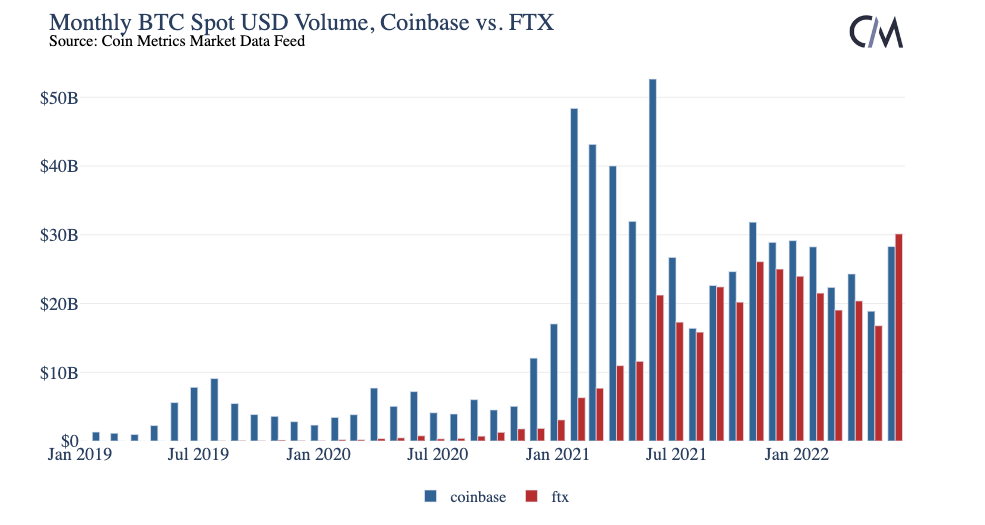Latest news about Bitcoin and all cryptocurrencies. Your daily crypto news habit.
SBF, Caroline Ellison, Alameda and FTX may have conspired to keep Bitcoin price below $20,000, but is it actually possible and worth the effort?
On Oct. 11, Caroline Ellison, former head of the now-defunct Alameda Research, informed a United States court that she received instructions from FTX co-founder and CEO Sam “SBF” Bankman-Fried to sell Bitcoin (BTC) if its price remained above $20,000.
This admission came as a shock to the entire crypto industry, but the two conspiring to suppress BTC’s price, versus actually doing it, are two different things.
While there are no details available regarding the size and timing of these trades, the timeframe likely falls between September and October 2022, just weeks before Alameda and FTX collapsed.
Determining whether Alameda effectively acted to suppress Bitcoin’s price below $20,000, as alleged by some analysts and traders, is challenging, if not impossible. Nevertheless, it is possible to assess the significance of FTX’s Bitcoin holdings in comparison to other exchanges and the total trading volume.
Look at the Bitcoin wallets
Currently, the only reliable publicly available information pertains to the BTC wallets that previously constituted the exchange’s reserves, amounting to less than 47,000 BTC by September 2022, according to Glassnode data. It’s possible that Alameda Research held other addresses directly, but given the substantial debt of the trading company, it’s unlikely they had any liquid reserves.
One should not assume that FTX used its entire stack of Bitcoin from users since the exchange continued processing client withdrawals until its final day on Nov. 8, 2022. Moving these assets abruptly would have aroused suspicion, potentially accelerating their insolvency. Nevertheless, it’s worthwhile to investigate the significance of FTX volumes and holdings.

Coinbase vs. FTX monthly spot Bitcoin volume, USD. Source: CoinMetrics
As of July 2022, FTX reported a spot Bitcoin volume of $30 billion, equivalent to $1 billion per day on average. However, relying on these numbers is not advisable, given the exchange’s history of data manipulation, as demonstrated by their falsified insurance fund calculation methodology.
Assuming the sales mentioned by Ellison occurred on FTX, a 4,000-BTC order, valued at $80 million at the time, would represent only 8% of the exchange’s average daily volume. Furthermore, when considering the total Bitcoin volume from major exchanges, Alameda’s speculated order size becomes even more inconsequential.
According to Messari’s “real volume” methodology, which excludes wash trading, the aggregate Bitcoin volume was below $3.5 billion per day between September and October 2022. Even if Alameda attempted to sell 25% of their 47,000 BTC holdings in a single day, that $240 million would represent only 7% of the daily volume across major exchanges.
For comparison, in April 2022, MicroStrategy announced the acquisition of 4,167 BTC at an average price of $45,714, totaling $190 million. This likely occurred in late March, with Bitcoin’s price increasing by 6%, from $44,580 to $47,270.

Bitcoin price index (USD), March–April 2022. Source: TradingView
Two notable aspects of the price action during MicroStrategy’s acquisition stand out. First, the price dropped below $46,000 on the same day as the official announcement on April 5, 2022. More importantly, the $48,000 peak appears to correspond to the levels where MicroStrategy completed its execution, resulting in the $45,714 average price.
However, when examining the broader picture, Bitcoin was trading around $39,500 in the two weeks leading up to MicroStrategy’s activity and decreased to $39,500 a few weeks later. There is no reason to believe that a single entity could effectively suppress the price for longer than a week, whether it’s Tesla unloading $936 million worth of Bitcoin or Alameda liquidating FTX clients’ deposits.
To provide some context, Binance held 623,000 BTC in reserves in August 2022, while Coinbase had nearly 690,000 BTC. These two exchanges combined held almost 28 times more Bitcoin than FTX. This fact underscores the limited impact of SBF and Caroline’s venture in terms of effective firepower.
In essence, there may have been a few days where Alameda exerted pressure successfully, causing their sales to suppress Bitcoin’s price below $20,000. However, considering their reserves and the price action of similarly sized orders, the event was unlikely to be significant when analyzing a period longer than a month.
This article is for general information purposes and is not intended to be and should not be taken as legal or investment advice. The views, thoughts, and opinions expressed here are the author’s alone and do not necessarily reflect or represent the views and opinions of Cointelegraph.
Disclaimer
The views and opinions expressed in this article are solely those of the authors and do not reflect the views of Bitcoin Insider. Every investment and trading move involves risk - this is especially true for cryptocurrencies given their volatility. We strongly advise our readers to conduct their own research when making a decision.
